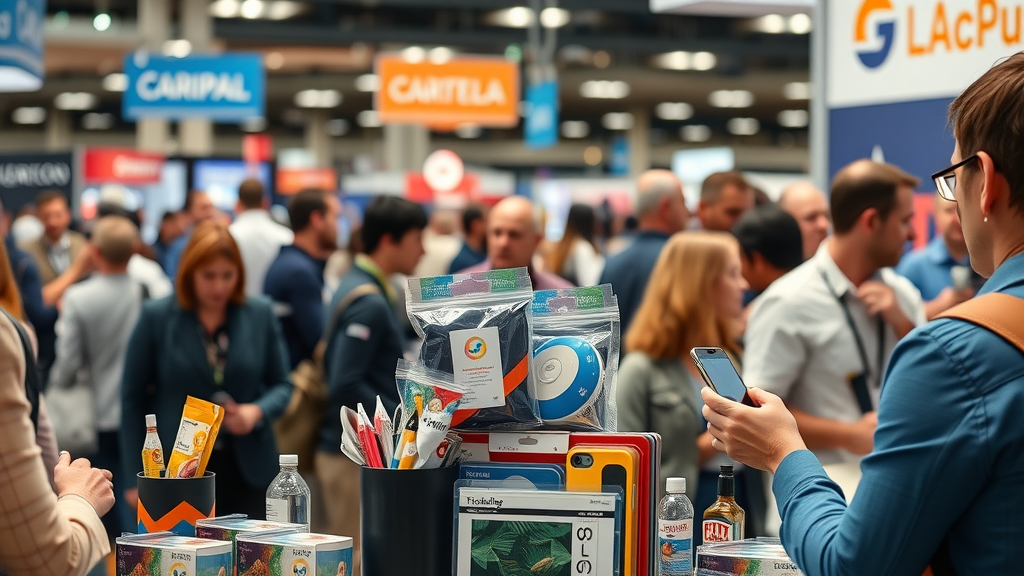Startling Statistic: Did you know that 85% of consumers remember a brand after receiving a promotional product? This astounding figure underscores just how impactful promo items can be in shaping brand awareness and loyalty. As we look ahead, the future of promotional products promises to merge cutting-edge technology with sustainability, personalization, and strategic marketing to redefine this vital space.
In this article, we dive deep into industry trends, innovative products to watch in 2025, sustainable practices, and expert insights from Brandon Jones of City Web Company. Whether you're a marketer or business owner, understanding these evolving facets will empower you to select promotional products that resonate meaningfully and deliver long-term impact.

Startling Trends Shaping the Future of Promotional Products
The future of promotional products is being shaped by an exciting blend of innovation and consumer expectations. One of the most influential trends is the rising demand for eco-conscious and sustainable items, with brands prioritizing materials and manufacturing processes that minimize environmental impact. This conscious shift reflects growing consumer preference for businesses that demonstrate responsibility and ethical practices.
Simultaneously, the integration of smart technology and digital features into promotional products is revolutionizing how brands engage customers. From IoT-enabled gadgets to QR codes that unlock immersive digital experiences, promotional items are becoming interactive tools that track engagement and extend brand storytelling beyond the physical world.
Brandon Jones, the marketing expert from City Web Company , emphasizes: “The future of promotional products lies in blending creativity with technology to create memorable brand experiences.” This approach amplifies brand visibility and fosters deeper consumer-brand connections.
Top 10 Innovative Promotional Products to Watch in 2025
- Eco-friendly corporate gifts that emphasize sustainability
- Smart tech promo products integrating IoT features
- Customizable apparel with advanced printing techniques
- Branded reusable water bottles and lunchboxes
- Personalized desk accessories like mousepads and keyrings
- Wearable tech as promotional items
- Interactive QR code-enabled products
- Trade show essentials with innovative branding
- Branded caps and hats with embroidered logos
- Novelty items tailored for specific industries

How Sustainability is Driving the Future of Promotional Products
Eco-Friendly Materials and Their Impact
Sustainability isn’t just a buzzword; it’s a fundamental driver for the future of promotional products . Consumers increasingly expect brands to act responsibly, which means promotional items are now selected with environmental impact front and center. Utilizing eco-friendly materials such as biodegradable packaging, recycled fabrics, bamboo, and organic cotton significantly reduces waste and carbon footprint.
Brands that invest in these materials also enhance their reputation, presenting a conscientious and forward-thinking image that resonates with green-minded customers. More importantly, sustainable promotional products provide tangible proof of a company’s values, thereby strengthening brand loyalty and consumer trust.
Expert Insight on Sustainable Promo Products
Brandon Jones, from City Web Company, shares his perspective: “Incorporating sustainability into promotional products is a strategic move that resonates deeply with today’s consumers.” This insight is supported by market data showing higher engagement rates and purchase intent when promotional products reflect environmental stewardship.

Personalization and Technology: The Future of Promotional Products
Digital Integration in Promotional Items
Personalization combined with technology is redefining promotional product strategies. Digital integration such as QR code inclusion, NFC chips, and augmented reality (AR) features allow a simple branded item to transform into an interactive gateway. Customers can scan a QR code on a product to access exclusive content, discounts, or immersive brand narratives.
Such innovations not only boost engagement but provide valuable analytics to marketers, tracking user interactions in real time. This data-driven approach enhances campaign optimization and ROI measurement, making promotional products smarter and more effective than ever before.

Expert Recommendations for Leveraging Technology
As Brandon Jones notes, “Brands that embrace technology in their promotional products will create more meaningful connections with their audience.” To capitalize on this trend, brands should thoughtfully integrate tech elements that align with their audience’s lifestyle and preferences rather than pursuing novelty for novelty’s sake. Authenticity and user convenience remain paramount.
The Role of Promotional Products in Trade Shows and Corporate Gifting
Effective Trade Show Promotional Products
Trade shows continue to be a prime venue for distributing promotional products that make lasting impressions. Highly visible, practical, and branded giveaways like pens, tote bags, or tech gadgets encourage booth visits and conversation initiation. The best trade show products are not only memorable but also useful, ensuring they remain with recipients long after the event.

Corporate Gifts That Make an Impact
Corporate gifting with premium promotional products strengthens business relationships by demonstrating appreciation and professionalism. Items such as personalized lunchboxes, high-quality pens, and exclusive apparel help brands express gratitude while reinforcing identity. These gifts encourage loyalty and can differentiate a company in competitive markets.


Common Misconceptions About the Future of Promotional Products
- Promotional products are outdated and ineffective
- Only large companies benefit from promo products
- Sustainability compromises product quality
- Technology integration is too costly for most brands
These myths can hinder companies from leveraging the power of promotional products. In reality, a well-designed promotional strategy can benefit businesses of any size, with sustainability often enhancing quality and technology becoming more accessible and affordable every year.
Actionable Tips for Choosing Future-Ready Promotional Products
- Prioritize eco-friendly and sustainable options to align with consumer values and reduce environmental impact.
- Incorporate personalization and digital features for increased engagement and data insights.
- Align products with your brand’s core message to maintain authenticity and coherence.
- Select items that offer practical value to recipients ensuring longevity and continual brand exposure.
- Leverage trade shows and corporate gifting strategically to maximize reach and relationship-building opportunities.

People Also Ask
What is the future of promotion?
The future of promotion is increasingly digital, personalized, and sustainable. Brands are investing in promotional products that leverage technology to create interactive experiences while emphasizing eco-friendly materials to meet consumer expectations for responsibility.
What are the hottest promotional items in 2025?
In 2025, the hottest promotional items include smart tech products with IoT integration, eco-conscious corporate gifts, customizable apparel with advanced printing, wearable tech, and interactive QR code-enabled items that blend physical and digital engagement.
What's trending in promotional products?
Trending promotional products emphasize sustainability, personalization, and technology integration. There is also a growing focus on trade show essentials and novelty items that cater to specific industries, enhancing targeted marketing efforts.
Who is buying promotional products?
Businesses of all sizes, from startups to multinational corporations, purchase promotional products. Marketers recognize these items as cost-effective tools to increase brand visibility, engage customers, and build loyalty, especially in trade shows and corporate gifting.
Key Takeaways
- The future of promotional products is driven by innovation, sustainability, and personalization.
- Technology integration enhances engagement and tracking capabilities.
- Trade shows and corporate gifting remain vital channels for promo product distribution.
- Debunking myths helps businesses make informed decisions about promo products.
- Strategic selection of promotional items maximizes brand impact.
Promotional Products Innovation Table
| Promotional Product Type | Key Feature | Benefit | Example |
|---|---|---|---|
| Eco-friendly products | Sustainable materials | Improves brand image | Recycled tote bags |
| Smart tech items | IoT integration | Interactive engagement | Bluetooth trackers |
| Personalized apparel | Custom printing | Enhanced brand recognition | Logo hoodies |
| Corporate gifts | High quality | Builds loyalty | Branded lunchboxes |
| Trade show items | Practicality | Memorable giveaways | Branded pens |
Conclusion: Embracing the Future of Promotional Products
The journey ahead for promotional products is marked by dynamic innovation shaped by technology, sustainability, and personalization. As Brandon Jones, of City Web Company, insightfully states, “The future of promotional products is not only about what you give but how it connects and reflects your brand’s values.” Embracing these trends will empower businesses to deliver memorable, impactful brand experiences that engage audiences and foster loyalty in a competitive marketplace.
By strategically choosing future-ready promotional products that combine practicality, eco-consciousness, and digital interactivity, your brand can stand out and thrive well into the future.
 Add Row
Add Row  Add
Add 



Write A Comment